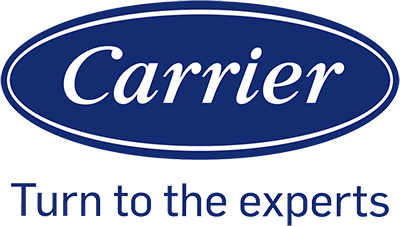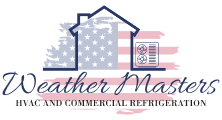When we think about keeping our HVAC system in good shape, we often focus on filters, thermostats, or regular tune-ups. What we don’t always notice is how much the air ducts matter. Clean air ducts lower strain on the system, which helps reduce wear and tear over time.

When dust and debris build up, airflow slows down. That makes the system work harder than it should, leading to more repairs and a shorter lifespan. By keeping ducts clean, we give our HVAC a chance to run smoothly and use less energy.
We also gain more than just system protection. Clean ducts support better airflow, improve efficiency, and even create healthier air in our spaces. With the right maintenance habits, we can protect our HVAC investment while also improving comfort indoors.
How Clean Air Ducts Reduce HVAC Wear and Tear
When we keep our air ducts clean, we lower the amount of dust and debris that reaches key HVAC components. This helps the system run with less stress, improving efficiency and reducing the risk of parts wearing out too soon.
Impact of Dust and Debris on System Components
Dust and debris inside air ducts often move through the system and settle on sensitive parts. Filters catch much of it, but buildup still reaches coils, fans, and other components. Over time, this dirt acts like an abrasive layer that interferes with normal operation.
When debris collects on moving parts, it can cause friction and imbalance. A blower wheel with dust buildup spins unevenly, which strains the motor and bearings. This extra stress shortens the lifespan of these parts and can lead to more frequent repairs.
We also see dust coating evaporator and condenser coils. Even a thin layer reduces heat transfer, forcing the system to run longer cycles. This extra run time increases wear on the compressor, one of the most expensive parts to replace.
Regularly cleaning ducts reduces the volume of dust that reaches these areas. With less buildup, the HVAC system maintains smoother operation and avoids the extra wear that comes from clogged or dirty components.
Prevention of Overworking Motors and Fans
When ducts are dirty, airflow becomes restricted. Dust, debris, and even small blockages limit how much air can pass through the system. This reduced airflow forces motors and fans to work harder to push air into rooms.
Overworking motors leads to overheating and faster deterioration of internal parts. Bearings wear down, lubrication breaks down faster, and winding insulation can fail under higher loads. These conditions often result in costly motor replacements.
Fans also lose efficiency when blades collect dirt. Dust-covered blades move less air with the same effort, which means the motor runs longer to meet temperature demands. This cycle of extra work increases energy use and mechanical wear.
By keeping ducts clean, we allow air to move freely. Motors and fans then operate under normal load conditions, which helps them last longer and reduces the likelihood of sudden breakdowns.
Reducing Strain on Coils and Blower Assemblies
Coils and blower assemblies depend on consistent airflow to function properly. When ducts carry excess dust, particles settle on coil fins and blower blades. This buildup reduces heat exchange and airflow, forcing the system to run longer cycles.
A dirty blower assembly can become unbalanced. That imbalance transfers vibration to the motor and surrounding parts, leading to noise and mechanical stress. Over time, this vibration can loosen mounts and damage connections.
Coils covered in dust and debris also struggle to absorb or release heat. For example:
- Evaporator coils lose cooling efficiency.
- Condenser coils struggle to release heat outdoors.
Both issues cause the compressor to work harder, which speeds up wear and increases the chance of failure.
When ducts remain clean, less dust reaches these parts. This keeps airflow steady, reduces strain on the blower assembly, and allows coils to maintain proper heat transfer. The system then operates more efficiently and with less mechanical stress.
The Link Between Clean Air Ducts, Airflow, and Efficiency

Clean air ducts allow air to move freely, which helps HVAC systems work with less strain. When ducts stay clear, we see better airflow, steadier temperatures, and fewer problems that drive up energy bills.
Optimizing Airflow for Consistent Performance
When ducts are clean, air passes through the system without unnecessary resistance. This steady airflow helps the HVAC unit maintain even temperatures throughout the home. Rooms heat or cool at a consistent rate, without hot or cold spots.
Efficient airflow also reduces how often the system cycles on and off. Fewer cycles lower wear on motors and fans, extending the life of the equipment. Clean ducts also help filters capture dust and allergens more effectively, which improves indoor air quality.
We can think of duct cleaning as a way to support balance in the system. By keeping pathways clear, airflow reaches every vent as intended. This reduces wasted energy and helps us avoid the higher utility bills that come with overworked equipment.
Consequences of Restricted Air Movement
When dirt, dust, or debris builds up inside ducts, airflow slows down. Reduced airflow forces the HVAC system to push harder to keep up with demand. This extra effort increases energy use and raises monthly energy bills.
Restricted ducts can also cause uneven temperatures. Some rooms may stay too warm while others remain too cool. This imbalance often leads us to adjust the thermostat more often, which adds more strain to the system.
Poor airflow does more than affect comfort. It can also trap allergens, dust, and other particles inside the system. These contaminants may circulate back into the air, lowering indoor air quality and making cleaning less effective.
Signs of Airflow Obstruction in Ducts
We can often spot airflow problems by paying attention to how the system runs. Weak air coming from vents is one of the clearest signs of blocked ducts. If air feels faint or uneven, it may signal a buildup inside.
Another sign is an unexplained rise in utility bills. When ducts restrict airflow, the system consumes more energy to reach the same temperature. This increase shows up in higher monthly costs.
Other indicators include more dust settling on surfaces and worsening allergy symptoms. These suggest that allergens and particles are circulating instead of being filtered out. Regular air duct cleaning helps prevent these issues and keeps airflow at its best.
Health and Environmental Benefits of Clean Ducts
When we keep our air ducts clean, we limit the buildup of harmful particles and reduce the spread of contaminants through the home. This helps us maintain a healthier indoor space while also lowering the risk of environmental problems that come from poor air circulation.
Minimizing Allergens and Mold
Dust, pollen, and mold spores often collect inside ductwork. When air moves through the system, these particles spread into every room. This can trigger allergies, asthma, and other breathing issues.
By cleaning ducts, we remove much of this buildup before it circulates. Mold is especially important to address since it grows in damp areas and can release spores that affect air quality.
We also lower the risk of musty odors and moisture-related damage when mold growth is controlled. A dry, clean duct system makes it harder for mold to thrive.
Key benefits include:
- Fewer allergens in the air
- Reduced mold spores
- Better breathing conditions for sensitive groups
Reducing Pet Dander and Dust Circulation
Pet dander is lightweight and sticks to surfaces, making it easy to spread through ducts. When combined with dust, it can build up quickly and recirculate through our HVAC system.
Regular duct cleaning helps limit this cycle. By removing dander and dust, we reduce the amount of material that settles on furniture, floors, and vents. This also keeps filters from clogging too quickly.
For homes with multiple pets, the impact is even greater. Cleaner ducts mean less airborne dander, fewer odors, and a more comfortable space for both people and animals.
Examples of common sources of buildup:
| Source | Effect on Air |
|---|---|
| Pet dander | Triggers allergies |
| Dust | Irritates lungs |
| Hair and fur | Blocks airflow |
Preventing Pest Infestations
Rodents and insects often use ducts as hiding places. They leave behind droppings, nesting materials, and even dead insects, which can spread bacteria and unpleasant smells.
When we clean our ducts, we remove these materials and make the space less attractive to pests. This lowers the chance of infestations spreading through the home.
Blocked ducts from pest activity can also strain HVAC systems. By keeping them clear, we protect both our health and our equipment.
Signs of pest activity in ducts may include:
- Scratching or movement sounds
- Droppings near vents
- Unusual odors from air circulation
Best Practices for Maintaining Clean Air Ducts
Keeping ducts clean requires a mix of professional help, simple homeowner tasks, and consistent filter changes. Each approach reduces dust buildup, improves airflow, and lowers strain on HVAC systems.
Professional Duct Cleaning Services
Hiring a duct cleaning service ensures that debris deep inside the system gets removed. Professionals use specialized vacuums, brushes, and blowers that reach areas we cannot access ourselves. This process helps reduce dust, mold, and allergens that may circulate through vents.
We should look for companies certified by groups such as the National Air Duct Cleaners Association (NADCA). Certification shows that the service follows industry standards and uses safe, effective methods. It is also important to ask about the equipment they use and whether they clean all parts of the system, including registers, coils, and fans.
Professional cleaning is not needed every year. In most homes, every 3-5 years is enough unless we notice visible dust, pest infestations, or musty odors. Choosing the right provider and scheduling at the right time helps us keep ducts clean without unnecessary costs.
DIY Duct Cleaning Tips for Homeowners
We can handle basic duct cleaning tasks on our own to reduce buildup between professional visits. Using a household vacuum with a hose attachment, we can remove dust from registers and grilles. Wiping these surfaces with a damp cloth also prevents dirt from reentering the airflow.
A few steps make DIY duct cleaning more effective:
- Turn off the HVAC system before starting.
- Remove vent covers and wash them with soap and water.
- Vacuum inside the ducts as far as the hose can reach.
- Check for visible debris or blockages near the openings.
DIY duct cleaning does not replace professional service, but it helps us maintain cleaner ducts day-to-day. It also gives us a chance to spot issues like loose connections, mold, or unusual odors early.
Routine Maintenance and Filter Replacement
Air filters play a major role in keeping ducts clean. A clogged filter allows dust and particles to pass into the duct system, which adds strain to the HVAC unit. We should replace disposable filters every 1-3 months depending on use, pets, and indoor air quality.
Reusable filters should be washed and dried before reinserting. Keeping a schedule for filter changes ensures we do not forget. Writing the replacement date on the filter frame or setting a reminder on our phone can help.
Routine maintenance also includes checking ducts for leaks, sealing gaps with foil tape, and keeping vents unblocked by furniture. These small steps reduce dust accumulation and help the system work more efficiently.




